The Enigma of Andy Warhol
His portraits of famous Jews, now at the Jewish museum, raises anew all the questions about Warhol’s artistry.
Let’s get it out of the way first: Andy Warhol, soup cans. Enough said, or is it? Detractors of the famous artist are often irked by his deadpan take on subjects: the aforementioned Campbell’s icons or Brillo Boxes in the 1960s, celebrity portraits in the ‘70s, or The Last Supper in the ‘80s. How are we to respond to the candy-colored screen prints turned out by Andy? What was the artist’s own take on these things — tinged with admiration or satire?
These questions are also raised by the suite of ten prints representing important Jewish figures of the 20th century, now at the Jewish Museum on Milwaukee’s East Side and on view through March 30. The project was sparked not by Warhol himself, but by conversations and ideas brought up by a gallerist and by a patron. Warhol did not conceive of the project alone, but let us not forget his background as a commercial artist, a hired gun with the ability to take an idea and make it into something more.
Warhol was not phoning it in on this project. The play of color, shape, line, and their relation to each visage is captivating. The ten pieces in this suite, on loan from the Spertus Institute in Chicago, were initially sourced from well-known photographs of each subject, and despite Warhol’s reputation as a cooly ambivalent pop art creator and character, there is no denying the skill and visual energy of these portraits. The figures presented here represent scientific geniuses, authors, actors and politicians, each vibrantly handled through a mesh of silkscreen, floating areas of flat color, and blotted lines. There is care in each composition that does not detract from the dignity of the figure.
Warhol’s portrait of Sigmund Freud retains the stern severity of the original photograph, but is energized by blocks of color overlaying the face in a way that suggests the divisions of the mind, the interplay between ego, superego, and id. Freud’s forehead is highlighted, a technique used in historical portraiture to suggest wisdom, while a spray of silver paint creates a powerful sense of three-dimensionality. Golda Meir is luminous and warm, appearing as a strong woman with a play of a smile and sparkling eyes. Her attention is keenly directed towards something outside the limits of the picture, as though drawn toward light suggested by rich yellow and red, while the opposite side of the picture fades into blue and violet, enlivened by a lemony line tracing selected details of hair.
The question of how the portraits are to be read, either as thoughtful depictions or shallow pop art confections, was a point of contention when the series was first exhibited. But in line with Warhol’s uncanny sense of public pulse, these portraits seem fresh, not formal, especially for a 21st century audience. They bridge the taste for instant gratification and visual confections that appeal to contemporary eyes while introducing these luminaries with their intellectual substance intact. They move easily between the worlds of high culture and mass media, much like Warhol himself.
Andy Warhol: 10 Portraits of Jews of the Twentieth Century continues through March 30 at the Jewish Museum (1360 N. Prospect Avenue).
NEW EXHIBITIONS
Gavin Brown
1500 N. Farwell Avenue
Exhibition runs January 9-March 2
Gavin Brown may be better known to art audiences as a New York gallerist (Gavin Brown’s Enterprise) but Green Gallery’s John Riepenhoff has forged connections and collaborations with Brown, and brings him here for an exhibition of his own work: a hypnotic blend of video projections, sound, and installation.
Enacting Acting
2155 N. Prospect Avenue
Exhibition runs January 10-March 9
This exhibition explores aspects of acting and performance through multimedia presentations by artists Robert Arndt, Vishal Jugdeo, and Alix Pearlstein. How are characters created, presented, perceived, and how the the nuances of emotional experience recreated for audiences? These questions of human behavior, for actors and audience, weave throughout these works.
Art
-
Winning Artists Works on Display
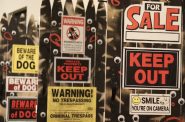 May 30th, 2024 by Annie Raab
May 30th, 2024 by Annie Raab
-
5 Huge Rainbow Arcs Coming To Downtown
 Apr 29th, 2024 by Jeramey Jannene
Apr 29th, 2024 by Jeramey Jannene
-
Exhibit Tells Story of Vietnam War Resistors in the Military
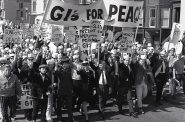 Mar 29th, 2024 by Bill Christofferson
Mar 29th, 2024 by Bill Christofferson
Art Date
-
Apocalypse Now
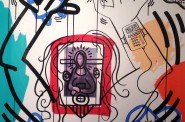 May 30th, 2014 by Kat Murrell
May 30th, 2014 by Kat Murrell
-
Slower Than a New York Minute
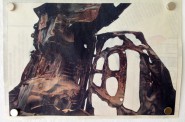 May 16th, 2014 by Kat Murrell
May 16th, 2014 by Kat Murrell
-
Easy Rider
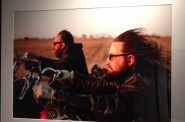 May 9th, 2014 by Kat Murrell
May 9th, 2014 by Kat Murrell

























Yes, Warhol began as a “hired gun” (making art for money) while all the while knowing that he was a true artist at heart.